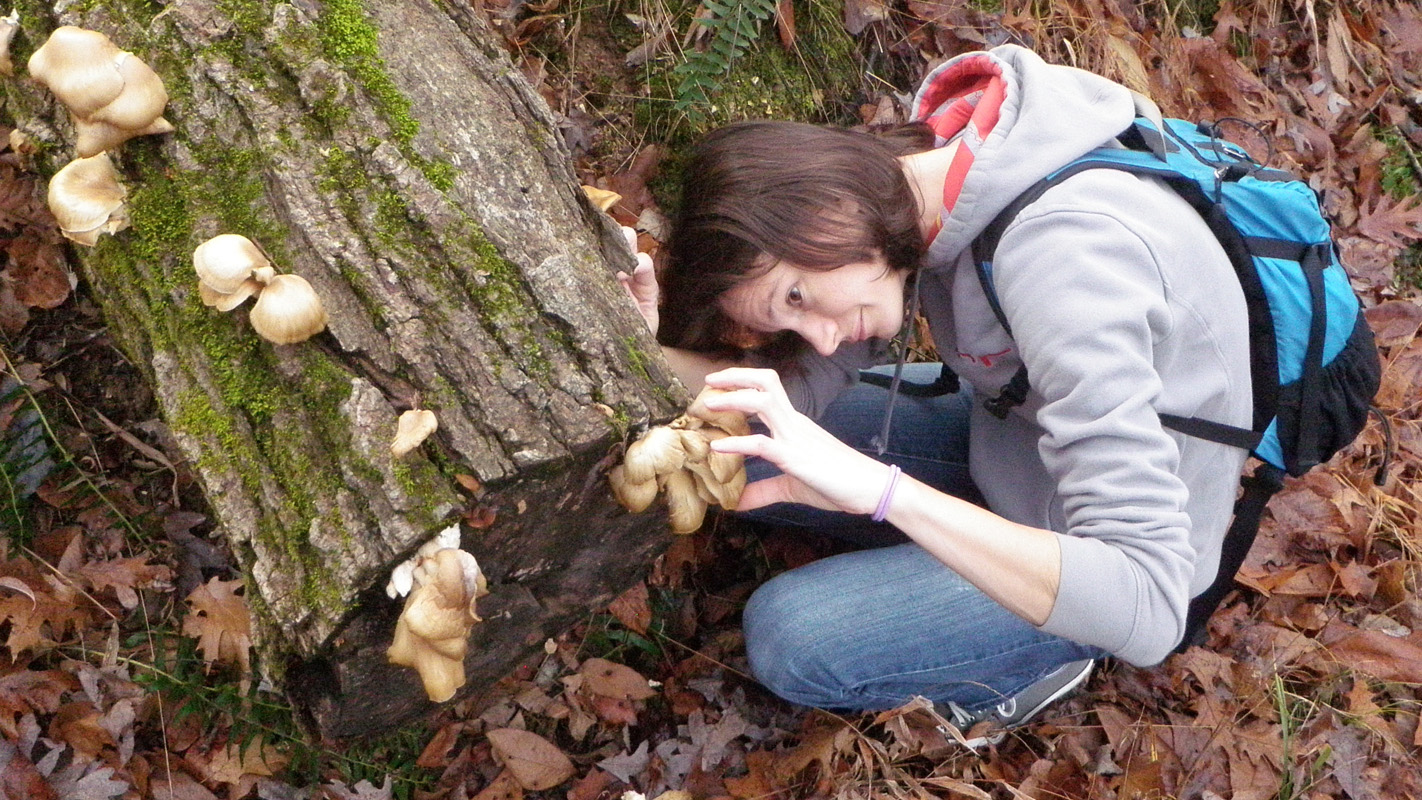This Is What Science Looks Like at NC State: Elsa Youngsteadt

Editor’s note: This post was written by Elsa Youngsteadt, an entomology postdoctoral research associate at NC State. The post is an entry in an ongoing series that we hope will highlight the diversity of researchers in science, technology, engineering and mathematics. The series is inspired by the This Is What A Scientist Looks Like site.
I’m one of those predictable entomologists who liked to play with bugs as a kid. It makes a nice story, but I’m not sure it means much—don’t all kids like to play with bugs at some point?
The real question is why some of us never stop. In my case the answer is not deep: Insects do such cool things! Seriously, this is what sucked me in as a grad student.
As a master’s student in Wisconsin, I studied carnivorous caterpillars. As you probably know, almost all caterpillars eat plants. But they have bloodthirsty cousins that feed ONLY on other insects.
Specifically, these carnivorous caterpillars eat aphids. And there is the catch: the aphids have ant bodyguards that protect them (because the ants like to eat sweet aphid poop). The ants kill or chase off other predators, like ladybugs—so why were my caterpillars getting by with murder?
The answer was chemical camouflage: The caterpillars get covered in the “smell” or even the “flavor” of the aphids. Ants, who take stock of the world mostly by smelling and tasting things with their antennae, couldn’t tell the difference between the aphids and their mortal enemies!

See how you could get hooked on this kind of story? There’s an odd animal out there, doing some fascinating thing that doesn’t make a lot of sense, and so you watch it. And you think about what might actually be going on. And you use some lab equipment to see the invisible chemicals the ants are smelling and tasting, and dab those same chemicals onto other objects to see if you can trick the ants just like the caterpillar does, and eventually you have your explanation.
That is how I started to become an entomologist.
Now I’m a research associate in Steve Frank’s lab, working to understand how urbanization and climate change affect insects. This means most of my fieldwork is in cities—sometimes quite literally in the middle of the street (like the photo on the right, of me doing fieldwork in New York City). Although this means less time spent sitting in the forest watching insects do interesting things, it feels important: We need to know what to expect from our insect neighbors as our environment changes.
Sometimes what we find is not-so-good news: Scale insects, which damage trees, become more common due to urban and global warming. But sometimes there’s good news, too: ants in New York City clean up our garbage for us, and they kept right on doing it even after their habitat got flooded in Hurricane Sandy.
Insects ooze right on over into my non-work life, too. My husband and I garden, a lot, and he can tell you that I get much less done when there’s some new plant in bloom and it is covered with bees. Who are they and what are they doing?! I’ve logged well over thirty species of native bees in our yard since I started paying attention to them last spring.
Because this is such a delight—and because native bees are so important to the environment—I’m working with a couple of friends in the lab to organize a workshop on gardening for native pollinators at the Raulston Arboretum in Raleigh this spring. (Maybe you can join us!)
But don’t worry, I promise it’s not all insects all the time. Besides the gardening (we keep chickens and grow vegetables, mushrooms, fruit trees, and native flowers), I spend my time rock climbing and running trail races. My longest so far was a 40-miler, which I think felt like far enough.
- Categories:


